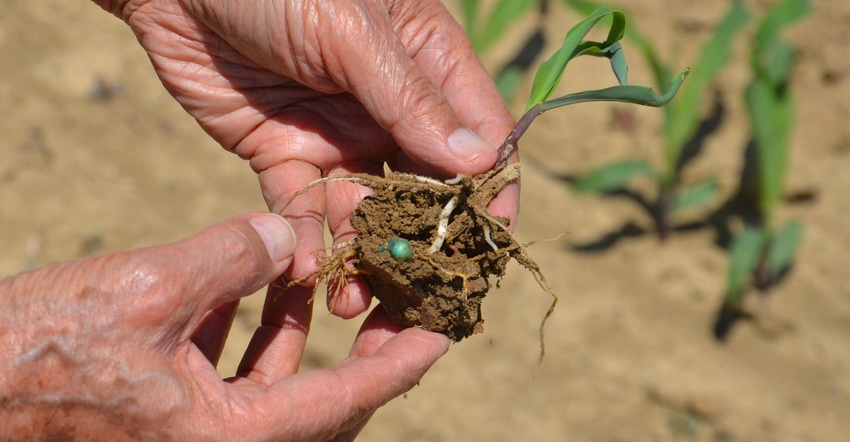February 25, 2020

The 2019 season was challenging. However, every year is different, and we learn new things in every growing season. Tom Bechman, editor of Indiana Prairie Farmer, and I scouted a cornfield in the central Corn Belt every two to three weeks last year from emergence to harvest for the Corn Watch ’19 project.
We learned and relearned lessons. Some seedlings had difficulty emerging. Upon digging, it was obvious soil compaction was the culprit.
In some areas, we almost knew plants “personally.” We tried to determine why a few plants were sick — what diseases were bothering them or what insects were bugging them. We studied the behavior of other plants toward their neighbors and how they reacted to latecomers. We watched how plants reacted to crowded conditions or to no competition. We observed what happened when 4 inches of water fell in one day, and when it turned hot and dry.
We compared two hybrids in side-by-side strips of 24 rows each throughout the field, planted by our Corn Watch ’19 cooperators, who are very good growers. These hybrids differed by a couple of days in pollen shed and number of tassel branches. One hybrid had a longer ear. The other had more rows per ear.
Due to excessive spring rains, the field was planted May 28. However, despite late planting, the field yielded about 235 bushels per acre. I wouldn’t change anything, except I would pay more attention to the weatherman at planting time in the future.
If you’re going to plant early, work with a good seed company to supply you with additional seed at no cost if replant is necessary. Even though this field was planted late in 2019, the growers achieved a good stand the first time.
Ready for 2020
We’re getting ready for Corn Watch 2020. Along with regularly reporting on crop progress, we intend to follow the journey of individual plants in 1/1,000 of an acre. Each plant has its own microenvironment that affects how much it yields, and we will zero in.
Make sure hybrids you plant early have good seedling vigor. Early stand establishment is very important. Make sure most plants emerge about the same time. Depth of planting must be very uniform. Plants that emerge even one to two days later may act more like weeds, hurting yield.
Our goal is to flag each seedling in the 1/1,000-acre zone as it emerges. Late-emerging plants get a different color flag. Precision Planting does this in plots, and a grower reports he does it, and then follows those plants to harvest. We intend to do this and report the results.
Plant spacing is also very important. Plants too close together end up producing nubbins or no ear at all. Make sure hybrids have tolerance to diseases and insects prevalent in your area. Corn borers are alive and well. The Bt trait for corn borer tolerance really works well.
There are no perfect hybrids. All have pluses and minuses. Compare more than yield before tossing a hybrid out. Identify strong and weak points. Take time to compare hybrid characteristics. Try to evaluate all hybrids on your farm. Replace the bottom one-third with new hybrids each year.
Nanda is director of genetics for Seed Genetics Direct, Jeffersonville, Ohio. Email him at [email protected] or call 317-910-9876.
About the Author(s)
You May Also Like






